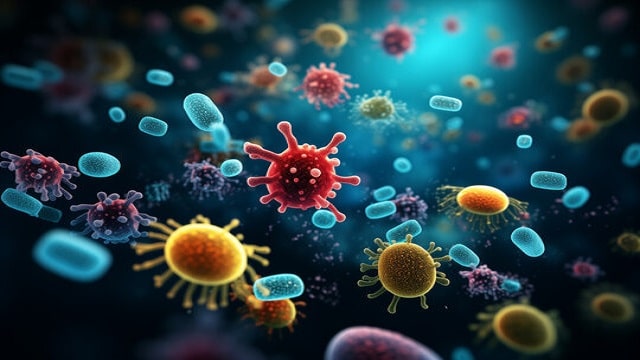Bacteriology
Bacteriology is the science or study of bacteria and their effects on disease and medicine, as well as other fields such as agriculture, industry, and economics related to food and wine spoilage. Some of the things studied in bacteriology are the origin, epidemiology, clinical or pathological review, and bacterial identification techniques from all aspects, both clinically, laboratory standards, and culture techniques.
In the health sector, bacteriology is usually used to detect the presence of bacteria in the human body or objects, such as water and food. Early progress achieved by bacteriology was to successfully identify the characteristics of bacteria associated with certain diseases. Today, most bacterial diseases in humans have been identified, although other variants continue to develop and sometimes appear, such as Legionnaire’s disease, tuberculosis, and toxic shock syndrome.
While a major advance in bacteriology during the last century has been the development of many effective vaccines (such as pneumococcal polysaccharide vaccine, diphtheria toxoid, and tetanus toxoid), others that are less effective or have side effects (such as cholera and typhoid vaccines).
First, it is important to note that bacteria are single-celled microorganisms that do not have a nuclear membrane, are metabolically active, and divide by binary fission. Medically, they are the main cause of disease. Bacteria sometimes look like relatively simple life forms. In fact, they are very sophisticated and adaptable. Many bacteria can reproduce at high rates and some species can utilize a variety of hydrocarbon substrates, including phenol, rubber, and petroleum.
This organism exists widely, both in parasitic and free-living forms. Because it can be found anywhere and has an extraordinary ability to adapt to changing environments, the importance of bacteriology in medicine cannot be underestimated.
Why Perform Bacteriological Examination?
There are many types of bacteria, as well as their properties and roles in human life. There are good bacteria, that can bring benefits, and there are also harmful ones that cause disease. The purpose of bacteriological examination is to identify the presence of bacteria on an object so that the characteristics of the bacteria can be known, whether they are good bacteria or bad bacteria.
The types of beneficial bacteria are as follows:
- Helps the decomposition process, such as the decomposition of the remains of living things, for example the bacteria Escherichia coli.
- Helps the process of making food and drinks from fermentation, for example, Lactobacillus bulgaricus in making yogurt, Lactobacillus casei in making yogurt cheese, Acetobacter in making acetic acid, and Acetobacter xylinum in making nata de coco.
- Acts as a nitrogen binder, for example the bacteria Rhizobium leguminosarum which lives in symbiosis with the roots of legume plants and Azotobacter chlorococcum .
- As a soil fertilizer, for example, Nitrosococcus and Nitrosomonas which play a role in the nitrification process and produce nitrate ions needed by plants.
- Helps produce chemicals, such as acetone and butanol by Clostridium acetobutylicum.
- Helping the process of decomposing waste and animal waste, thus producing alternative methane energy in the form of biogas. For example, methanobacterium.
- Used in genetic engineering research in various fields. For example, in the medical field, there are drugs and useful chemical products synthesized by bacteria, such as enzymes, vitamins, and hormones.
In addition, there are also bad and harmful bacteria that will have the following impacts:
- Food spoilage, for example Clostridium botulinum.
- Being the cause of disease in humans, for example Vibrio cholerae (the cause of cholera or gastroenteritis), Mycobacterium tuberculosis (the cause of tuberculosis), Mycobacterium leprae (the cause of leprosy), and Clostridium tetani (the cause of tetanus).
- Causes of disease in animals, for example Bacillus anthracis (the cause of anthrax in cattle).
- It causes diseases in cultivated plants, for example Pseudomonas solanacearum (causes diseases in tomato, chili, eggplant, and tobacco plants) and Agrobacterium tumafaciens (causes tumors in plants).
How to Perform Bacteriological Examination?
Because they are microorganisms, bacteria are very small in size, so they cannot be seen and detected with the naked eye. Therefore, bacteriological examination requires special equipment such as a microscope, or other equipment used to detect microorganisms.
When Should You Perform a Bacteriological Examination?
Bacteriological examination is usually performed when wanting to detect the presence of bacteria in an object. In the health sector, bacteriological examination is performed to help determine the diagnosis of someone suspected of having a disease caused by bacterial infection or other microorganisms. In addition, in everyday life, bacteriology is also often used to detect the presence of bacteria in water or food circulating on the market.
Where to Do Bacteriological Examination?
Bacteriological examination can be carried out in a laboratory, or a place that provides adequate equipment to check for the presence of bacteria.

